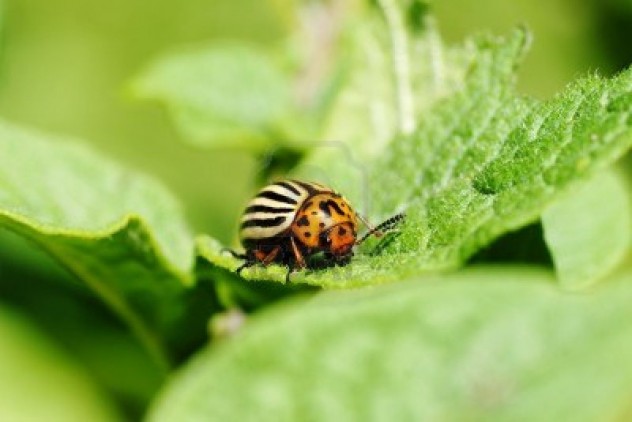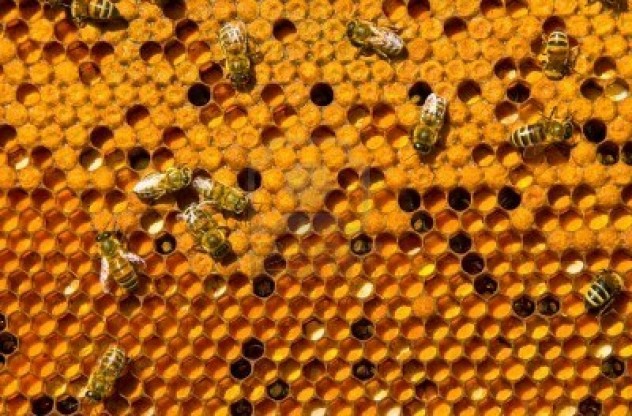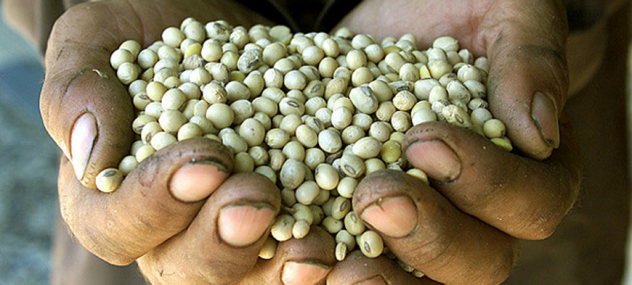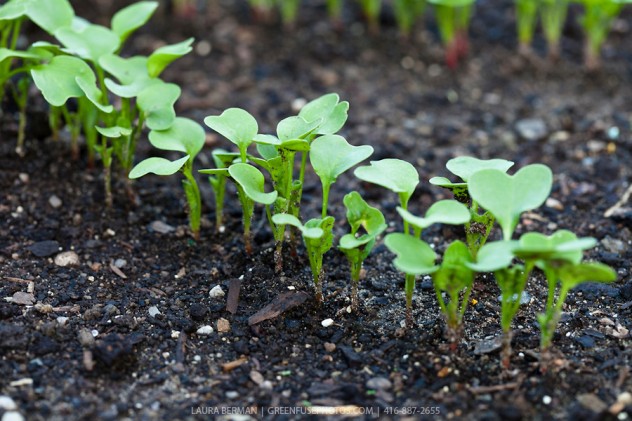 History
History  History
History  Creepy
Creepy 10 More Representations of Death from Myth, Legend, and Folktale
 Technology
Technology 10 Scientific Breakthroughs of 2025 That’ll Change Everything
 Our World
Our World 10 Ways Icelandic Culture Makes Other Countries Look Boring
 Misconceptions
Misconceptions 10 Common Misconceptions About the Victorian Era
 Mysteries
Mysteries 10 Strange Unexplained Mysteries of 2025
 Miscellaneous
Miscellaneous 10 of History’s Most Bell-Ringing Finishing Moves
 History
History 10 Great Escapes That Ended Right Back in Captivity
 Weird Stuff
Weird Stuff 10 Fascinating Things You Might Not Know About Spiders
 Food
Food 10 Everyday Foods You Didn’t Know Were Invented by the U.S. Military
 History
History 10 Most Influential Protests in Modern History
 Creepy
Creepy 10 More Representations of Death from Myth, Legend, and Folktale
 Technology
Technology 10 Scientific Breakthroughs of 2025 That’ll Change Everything
Who's Behind Listverse?

Jamie Frater
Head Editor
Jamie founded Listverse due to an insatiable desire to share fascinating, obscure, and bizarre facts. He has been a guest speaker on numerous national radio and television stations and is a five time published author.
More About Us Our World
Our World 10 Ways Icelandic Culture Makes Other Countries Look Boring
 Misconceptions
Misconceptions 10 Common Misconceptions About the Victorian Era
 Mysteries
Mysteries 10 Strange Unexplained Mysteries of 2025
 Miscellaneous
Miscellaneous 10 of History’s Most Bell-Ringing Finishing Moves
 History
History 10 Great Escapes That Ended Right Back in Captivity
 Weird Stuff
Weird Stuff 10 Fascinating Things You Might Not Know About Spiders
 Food
Food 10 Everyday Foods You Didn’t Know Were Invented by the U.S. Military
10 Problems Genetically Modified Foods Are Already Causing
The difficulty of debating the subject of genetically modified (GM) foods is they are so new that we don’t really know how they affect the human body–they just haven’t existed long enough to draw conclusive facts. However, we don’t need to wait around for decades to see how scientifically engineered foods will impact our nutritional health, since they’re already causing enough trouble in other ways to prove they’re not worth our while.
Consider the following.
10Create Superbugs and Superweeds

The good thing about designing a plant with an insecticide gene is it eliminates a lot of unwanted bugs. The downside is that only the strongest insects survive, resulting in a new class of superbugs resistant to both the crops’ implanted toxins and spray-on chemicals.
In 2011, scientists examined 13 major pests and found that five were immune to the poisons genetically bred into GM plants like Bt corn and Bt cotton. Similarly, farmers are battling ultra-hardy weeds which aren’t responding to glyphosate–the herbicide marketed as Roundup. As a result farmers are forced to use even more chemicals to combat these superweeds. According to the peer-reviewed journal Environmental Sciences Europe, GM crops cause herbicide use to increase 25 percent per year.
What sometimes confuses people and the data, however, is that farmers may actually experience a lower need for chemicals in the first few years of growing a GM crop. Yet, once the pests and weeds develop immunity, farmers have little choice except to spray ever-increasing amounts of herbicides and pesticides–effectively raising their own operating costs and pollution levels.
9Kill Bees and Butterflies

One of the advertised benefits of GM foods is they are pest and weedkiller resistant, which supposedly leads to greater crop yields. Unfortunately, the methods GMO companies use to pest-proof their crops is also suspected to kill vital beneficial bugs, like bees and butterflies. At first consideration it might seem like more food for the world should trump the lives of a few annoying bugs, but that’s shortsighted thinking since the elimination of pollinating insects could eventually lead to a collapse in the food supply. This is because insect pollination supports one-third of food crops (with honeybees responsible for 80 percent of that number). Thus, instead of solving food shortage problems, GM foods may actually make things much, much worse.
Why are GMO producers allowed to grow their butterfly and bee-killing crops? Unfortunately, with the slurry of insecticides, fungicides, genetically modified crops, and high-powered weedkillers present in modern farming, it’s hard to prove if GMOs are truly the variable to blame. Just as one study proves GM crops are the problem another study is released claiming they are totally safe. Meanwhile, honeybees continue to decline at a rate of 30 percent per year and butterfly populations have reached an all-time low.
Although it’s unclear whether GM crops are inherently bad for beneficial insects, they’re at the very least perpetuating the widespread use of chemicals, which undoubtedly harms insects and the “weeds” they depend on (such as butterflies which lay their eggs on milkweed).
8Farmers Can’t Harvest Seeds

Fundamentally, farming is a simple process: plant seeds, grow crops, harvest crops, and gather seeds from the plants for the next season. Sadly, GMO companies like Monsanto take this last step away from farmers and raise expenses even further by forcing the farmers to continually buy the premium-priced GM seeds every growing season. In fact, as was shown in the Bowman v. Monsanto court case, it is illegal in the US for someone growing a Monsanto crop to harvest the seeds and use them later. The Bowman case went all the way to the Supreme Court and, despite public outcry, the 70-year-old farmer was unanimously found guilty of patent infringement after he purchased and used second generation Monsanto seeds.
Preventing farmers from harvesting seeds means big businesses could eventually have total control over the world’s seed supply and prices. Currently, just three mega companies control over half of the global seed market, which has caused prices to skyrocket. For example, the average price of planting an acre of soybeans has gone up 325 percent since 1995. Things get even scarier when you consider Monsanto has developed and owns a patent on a “terminator gene” which can make a plant produce sterile seeds–but don’t worry, they’ve promised not to use the technology.
7Cross-Pollination Contaminates Regular Crops

One of the major problems with GM crops is they are difficult to contain, which means they could be extremely hard to get rid of if we later decide they are a bad idea. Scientists have yet to figure out a way to control cross-pollination, so no matter how diligent a small, organic farmer is in using natural growing methods, he can’t stop pollen from a GM farm from blowing in, fertilizing, and turning his crops into hybrids. While it’s fairly easy to reduce contamination in some plants, with others–like canola and corn–it’s nearly impossible.
Early on, Monsanto and others claimed cross-pollination wouldn’t be an issue if farms were sufficiently spread apart, yet this proved inaccurate when they found pollen could travel much farther than expected (several kilometers or more). As GM crops grow in popularity, we may not be able to choose between consuming or avoiding them as all plants will be “infected.” Even buying food with an organic label doesn’t put you totally in the clear as some governing agencies, like the USDA, don’t revoke a farm’s organic status if a few plants were cross-pollinated with a GM crop.
6It’s Illegal to Accidentally Grow a GM Plant

It seems there’s a basic flaw in how GM crops are governed. For one, they’re illegal to own unless you buy them directly from an approved distributor every season, but on the other hand the seeds and pollen from these plants are flying around everywhere. What happens to a farmer who, from cross-pollination, unintentionally grows a Monsanto plant? While Monsanto has never sued anyone for having trace amounts of non-purchased GMOs in their fields, they have sued farmers who claimed to be growing large amounts of patented crops by accident.
For instance, Percy Schmeiser, a 74-year-old Canadian canola farmer, was sued by Monsanto when it was discovered a majority of his crop contained the patented Roundup Ready gene. Schmeiser said he didn’t know how his fields became contaminated, yet he suspected it was from a neighboring farm that grew GM crops. His best guess was the plants closest to the neighbor’s farm were most likely to survive his own herbicide treatments and those were the plants and seeds his hired hands unwittingly harvested. In the end, the courts sided with Monsanto, saying Schmeiser “knew or ought to have known” his seeds were resistant to Roundup.
Complicating matters further, farmers often buy “commodity” bags of seeds that come from a mishmash of sources–including GMO farms. So, if a farmer plants a Monsanto seed that was randomly mixed in with the rest of the bag and later harvests more seeds from the plant, he can be sued for not paying royalties to the GMO giant. This is exactly what happened to Vernon Bowman in the Bowman v. Monsanto case.
5Increased Suicide Rates

Farming is always a gamble, especially in places like India, where farmers depend on a strong monsoon season to provide enough water for their crops. If the monsoon fails, so does their livelihood. For this reason and a myriad of other socio-economic challenges, suicide numbers among Indian farmers are staggeringly high (about 1,000 per month). GM crops are making matters worse as desperate farmers borrow money at extortionate rates to pay for “magic” GM seeds that, unfortunately, require twice the amount of water and don’t live up to their pest-free claims. When bollworms continue to decimate their plants or the monsoon doesn’t deliver, hopeless farmers crushed with insurmountable debt see no way out except to drink a deadly glass of insecticide.
Despite there being over 125,000 suicides since the introduction of GM crops in India, and, as reported in a New York Times article, the ridiculously high prices of seeds and pesticides are causing farmers to make less money than ever. Additionally, as pests and weeds become increasingly immune to insecticides, farmers have to spend more and more money on chemicals. And let’s not forget, they are also legally required to buy new seeds every season unless they want to be sued or forced to burn all their plants.
While Monsanto sticks to its story of creating higher crop yields, there are many who disagree, including India’s Agricultural Ministry. The ministry says Monsanto’s Bt cotton was successful for five years, yet now produces no better than any other crop. It blames GMOs for the current rash of suicides among cotton farmers. In 2012, a panel of scientists commissioned by India’s Supreme Court recommended a 10-year moratorium on field trials for all GM crops until further testing was done and stricter regulations created. It’s uncertain when or if the government will put the advice into effect.
4Little Government Oversight

The sad thing is, the “superbugs” created by Roundup Ready plants may have been avoided if farmers were required to adhere to safe farming practices. For example, farmers who follow GM guidelines and plant “refuges” (areas of non-Bt crops) adjacent to their GM fields, have extremely lower rates of pest resistance. However, a lack of training, resources, and enforcement means many farmers don’t follow the refuge technique and superbugs continue to proliferate. This is likely what has led to the resurgence of the bollworm in India as the bug has become unaffected by Bt cotton, which was supposed to be bollworm-proof.
Additionally, while 64 countries–including China and the European Union–require labeling of genetically engineered foods, the United States (the largest producer of GM crops) still has no such laws. This makes it incredibly difficult for people to choose whether or not they want to consume GM foods, as many folks aren’t even aware when they’re eating a GM product. For instance, the USDA says 94% of soy and 75% of all corn grown in the U.S. is genetically modified. When you consider some type of corn, corn syrup, or soy is in just about every pre-packaged food, there’s a good chance Americans are eating a lot more GMOs than they realized. On top of that, many farm animals are consuming these engineered foods and passing them along in their meat.
3Revolving Door between Government and Biotech Workers

As often as GMO protestors shout out the dangers of “frankenfoods,” biotech companies respond, scientific studies in hand, that GM foods are perfectly safe. It’s admittedly hard to make sense of the endless contradictory information, but there’s at least one fact that should raise the eyebrow of even the most neutral party: the former attorney and vice president of Monsanto, Michael Taylor, is now the Deputy Commissioner at the United States Food and Drug Administration. Taylor has also held positions at the USDA and is often criticized for being in the “revolving door” of the public and private sector.
Even those who don’t gravitate towards conspiracy theories can’t help but wonder if Taylor genuinely took the position with the FDA for his love of food safety and civil service or if he has ulterior motives to protect his agribusiness buddies. This makes it hard to trust the FDA when they say GM foods pose no other risks than their natural counterparts. Trust diminishes even further when you consider that, back in the ’90s, FDA scientists warned that gene-sliced foods were significantly different and could lead to “different risks” as compared to conventional foods. For some reason, those findings didn’t match official policy.
2Harm Biodiversity

Biological diversity, or biodiversity, refers to the variety of lifeforms in a particular region or on the earth as a whole. Maintaining biodiversity is important since every living thing plays a pivotal role in the circle of life we currently enjoy.
Industrial farming reduces biodiversity as agribusinesses clear the land of all native plants and focus on producing only one type of crop. This large-scale monoculture crop production has resulted in a 75 percent reduction in plant diversity since the 1900s. GM farms make things worse because not only do they produce a single plant species (e.g. corn, soybeans, rice), but all the plants within the species come from one modified source plant and are genetically identical. Having such unvaried crops is troublesome as it makes our food supply particularly susceptible to climate change, disease, and pests. And it’s not just the biodiversity of plants that are affected. As mentioned, insects like bees and butterflies are already suffering, and herbicides are known to result in birth defects and population decline in amphibians, birds, soil organisms, and marine ecosystems.
Businesses like Monsanto are further hampering biodiversity by systematically buying up seed firms and replacing tried and true conventional varieties with their higher-priced, genetically engineered versions. While some argue Monsanto’s ultimate goal is to control the world’s food supply, it’s more likely their motivation is simply higher profits. After all, they make much more money by selling their patented, expensive, must-buy-every-season seeds than by offering quality traditional seeds.
1Distract from Healthy, Environmentally Friendly Technologies

One of the main strategies GM companies have used to push their way to the agriculture forefront is the promise of preventing a world food crisis and being the solution for hungry people in Africa and elsewhere. However, that assurance hasn’t exactly panned out since GM crop yields are highly variable and many countries simply don’t want to eat food designed in a laboratory.
In fact, in 1998, 24 delegates from 18 African countries told the United Nations Food and Agricultural Organization, “We strongly object that the image of the poor and hungry from our countries is being used by giant multinational corporations to push a technology that is neither safe, environmentally friendly nor economically beneficial to us. We do not believe that such companies or gene technologies will help our farmers to produce the food that is needed in the 21st century. On the contrary, we think it will destroy the diversity, the local knowledge and the sustainable agricultural systems that our farmers have developed for millennia, and that it will thus undermine our capacity to feed ourselves.”
So, if GMOs aren’t the answer, how are we to feed the world’s rapidly growing population? Fortunately, there are many viable solutions being advocated by farmers and scientists alike. For example, as reported by the 1996 National Research Council in the U.S., there are currently many crops such as pearl millet, fonio, and African rice that are nutritious, tasty, and produce well in harsh climates. Additionally, environmentally friendly, low-water farming methods, such as the System of Rice Intensification (which improves rice production by 50-100 percent) is being used as a model for growing other crops in a sustainable manner. Other ideas include the decentralization of farming, urban farming, greenhouses on top of grocery stores, aquaponics, and more. Diverting funds and resources away from GMOs could allow one or more of these natural, wholesome practices to flourish.
Content and copy writer by day and list writer by night, S.Grant enjoys exploring the bizarre, the unusual, and topics that hide in plain sight. Contact S.Grant at [email protected].








